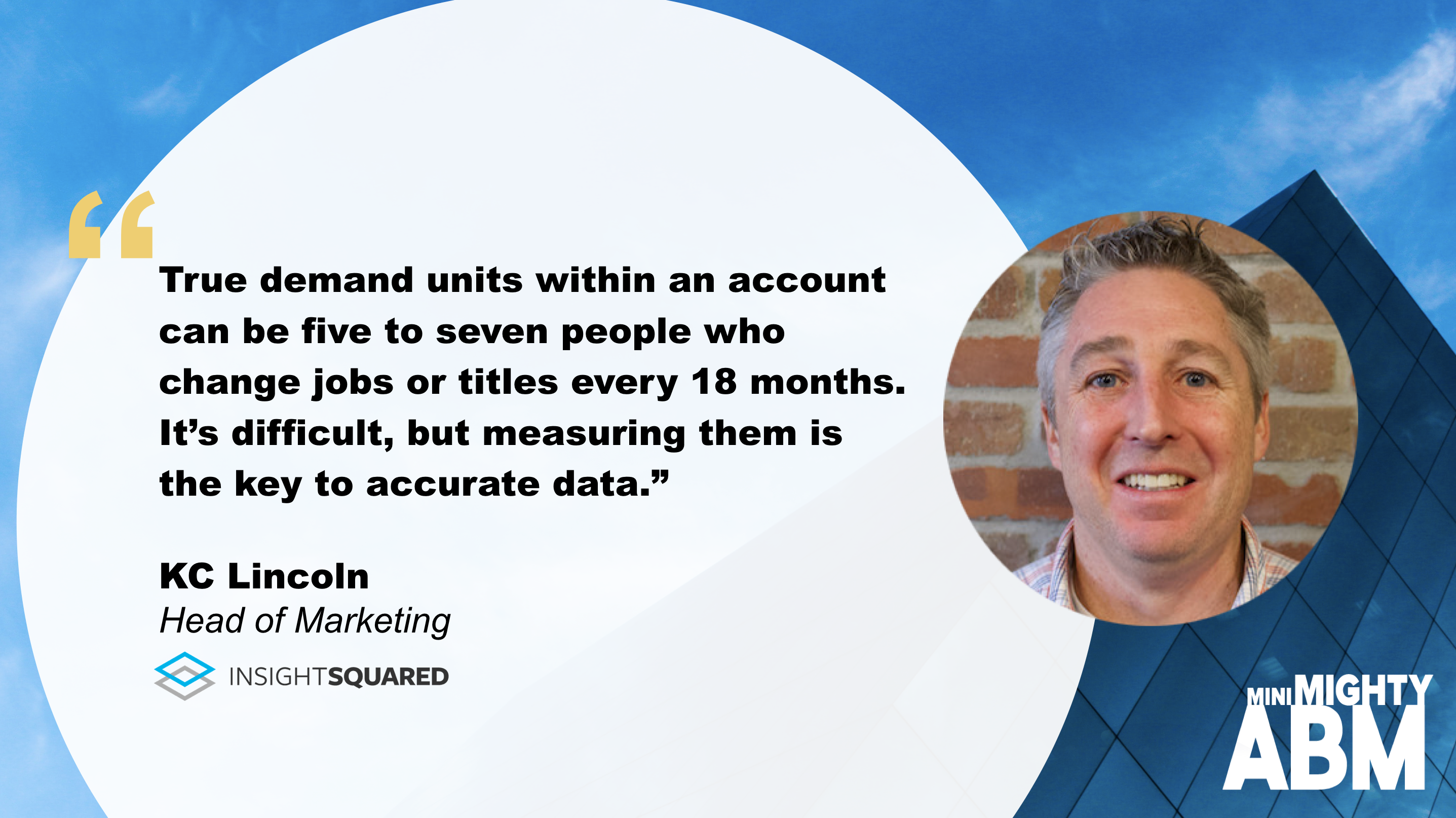To Generate Pristine Data, Lock Down Your Buying Group
Mini Mighty ABM

This article is part of the Mini Mighty ABM series where we ask top experts in ABM to share one actionable idea that you can use at work today. These tips are mini, but mighty. For more, visit ABM Revealed.
The biggest, most underrated benefit to ABM is that it makes your data better. It forces you and your team to get very, very specific about the people within an account who buy and to define and measure your wins.
If you’re just piloting ABM, it’s not uncommon for this process to expose your previous ways of measuring as inadequate, and I speak from experience. I’m a former InsightSquared customer and I implemented ABM at my last two companies. Allowing every salesperson to define their buying group differently, and record it differently in the CRM, no longer works in ABM.
You have to define your buying groups with laser precision from the top-down. The better you do that, the better your data becomes, the more accounts you close, and the more pristine data you collect.
Defining your buying group
Historically, many marketers have been in a situation where sales defines their own buying groups and practically no two salespeople define it the same. At two of my last four companies, I’ve seen salespeople create multiple opportunities for the same deal because they didn’t want to forget to follow up. That’s bad. You need someone with “ops” in their title to lock that down in the CRM because otherwise, it throws off the whole organization’s forecasts and worse—it skews your perception of who actually buys.
I recommend measuring in-demand units per SiriusDecisions’ latest Demand Waterfall methodology. It can seem complicated if you’re coming from a world of leads. We all instinctively think in terms of leads because as consumers, that’s how we buy. But true demand units within an account can be five to seven people who change jobs or titles every 18 months. It’s more difficult, but measuring them is the key to accurate data.
Here’s how to define your buying group:
Ask your ops team to translate that buying group into business logic in your CRM and marketing system. Get sales to sign off, then adjust based on feedback. If reps repeatedly ask your team, “Hey, I want to add the VP of operations to the opportunity,” add them. Iterate. Incorporate new pockets of demand and personas until sales stops coming back with adjustments. That’s when you’ll know you’ve defined your buying groups correctly.
Don’t forget air and ground cover
The world is uncertain and data is never perfect. For all the precision of your demand units, prospects will still occasionally fall through the cracks and you need classic demand-gen programs running to identify and attract those undetected hand raisers. I call these air-cover programs: paid search, technical SEO, and intent marketing.
Cover yourself within the accounts too, with groundcover programs that widen your engagement. These are email programs, LinkedIn ads, help from data vendors, and ongoing profiling projects. ABM is great, but it’s no magic bullet and it pays to be a good digital marketer covering your blind spots.
My actionable takeaway:
Define your buying groups with laser-precision from the top-down, to create a cycle of better and better data, then give yourself air and ground cover.

KC Lincoln
Head of Marketing, InsightSquared
KC brings 20 years of experience in building, leading, and scaling high-performing marketing teams at growing software companies. KC has spoken at Marketo’s Marketing Nation Summit, HubSpot’s INBOUND Conference, SXSW, MarketingProfs B2B Forum, and MarketingSherpa’s Lead Gen Summit.
